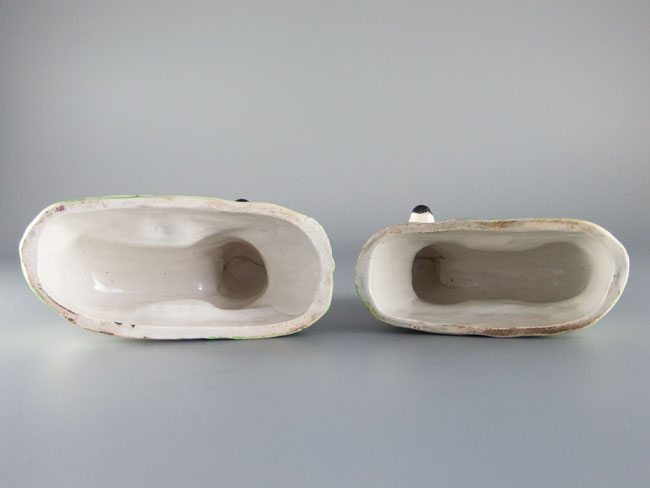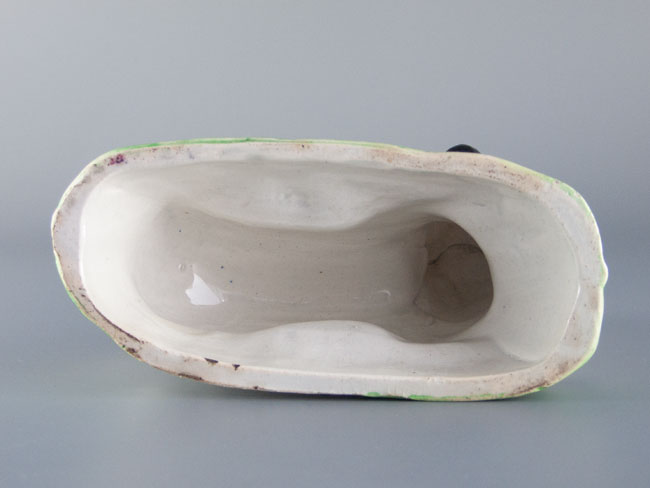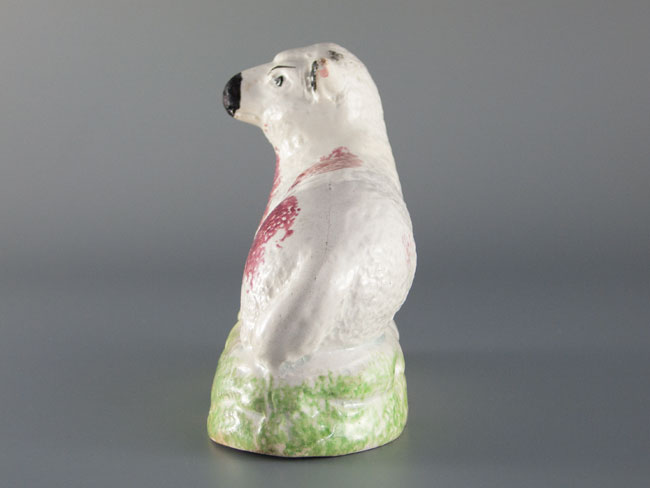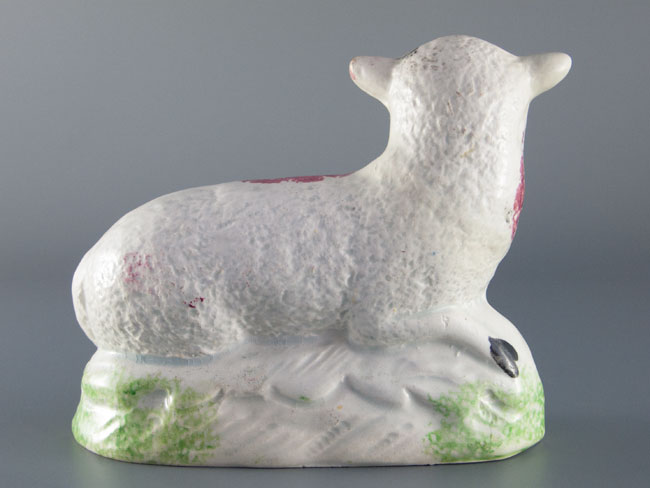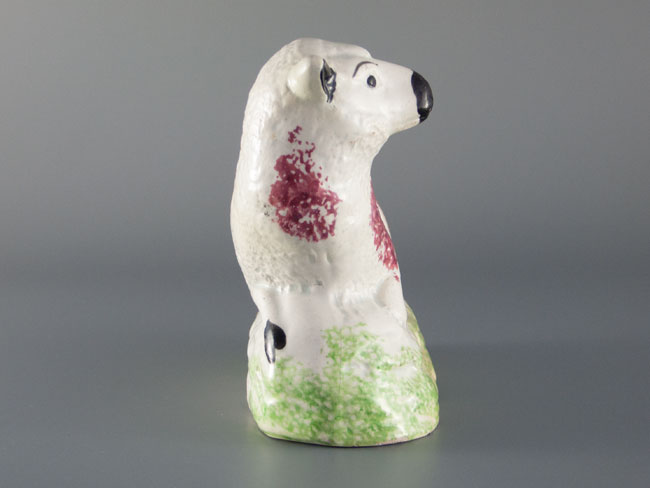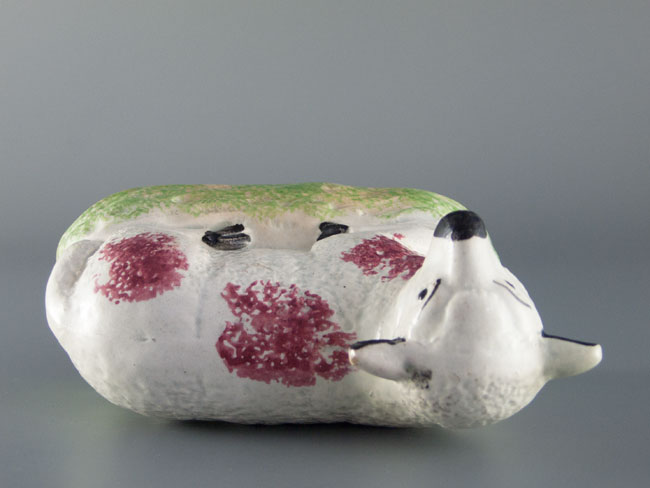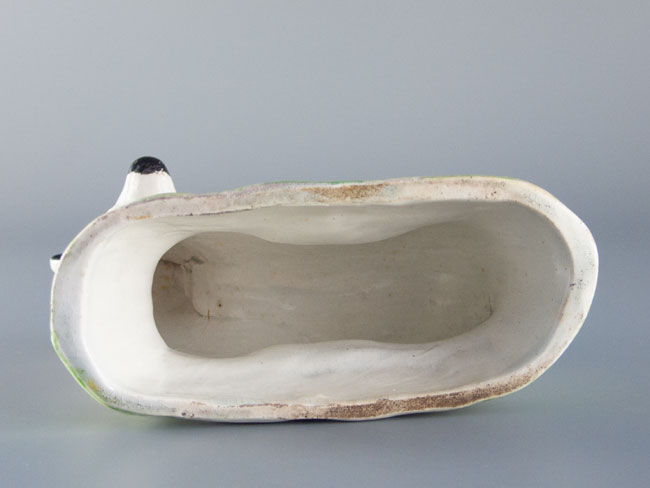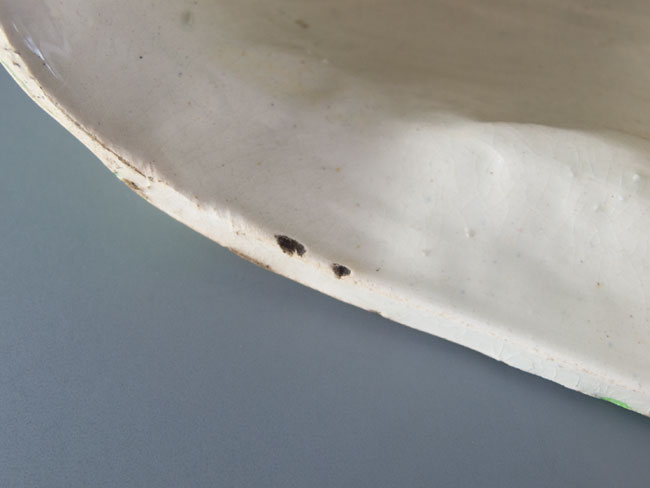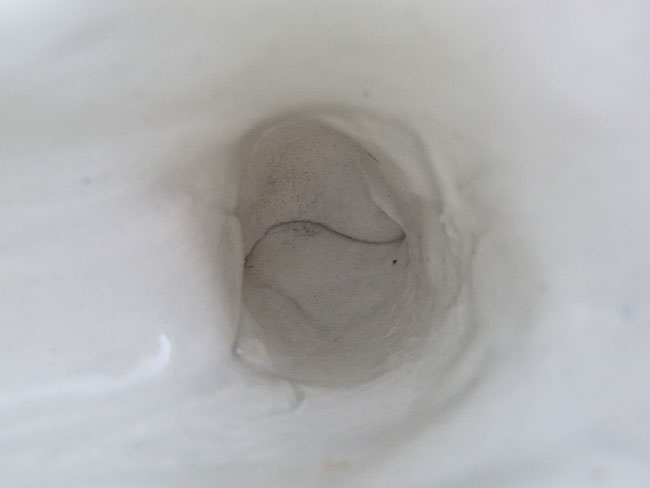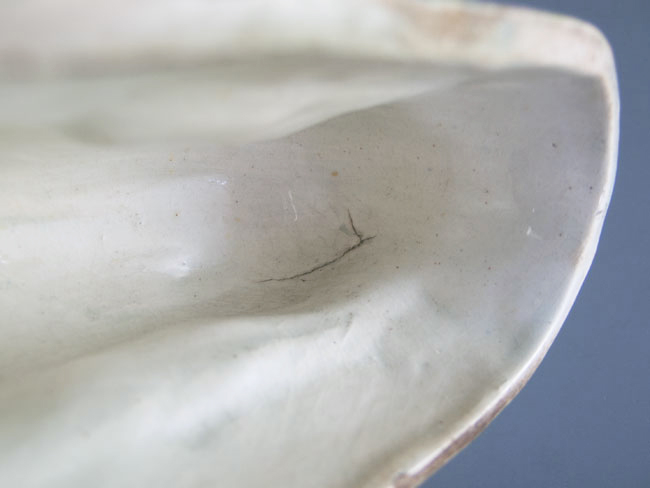Pottery models of a Ram and a Ewe, English or Scottish, circa 1820
This pair of lead-glazed earthenware models of a ram and a ewe, recumbent on moulded green grassy bases, was made in the early 19th century. The moulded fleeces are sponge-decorated with puce markings, whilst the horns, ears, eyes, noses and hooves are picked out with black enamel. The base of the ewe also has sponged green decoration.
Similar models were made in Staffordshire and the North Country, although the use of puce and black decoration hints at a Scottish maker, perhaps at Portobello, near Edinburgh.
Condition: With their naive modelling and colouring, these rustic models have such a wonderful folk charm. The ram has two tiny chips to the inside of the foot rim, and also a short, faint glaze hairline to the interior, which does not go through. No other damage, and no restoration. The right ear of the ewe is restored, as is a break at the neck. There is a short, faint glaze hairline to the interior, which does not go through, and a small restored chip to the inside of the foot rim. There is also a little light staining to the base, and a clay tear to the interior, from manufacture. The black to the end of the ewe’s nose has been lightly re-touched. Both models have typical crazing and pooling to the ‘pearl’ lead glaze. The mould seam can be seen inside the head of both the ram and the ewe. A very decorative pair, they display beautifully together.
Dimensions: Ram – Length 14.3 cm; Height 10.5 cm; Width 6.5 cm; Ewe – Length 12.4 cm; Height 10.5 cm; Width 5.4 cm
A Collector’s History of English Pottery, Griselda Lewis (Antique Collectors’ Club, 1987).
English Pottery and Porcelain, Geoffrey Wills (Guinness, 1969).





